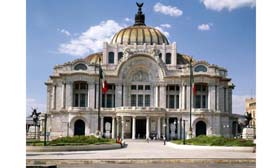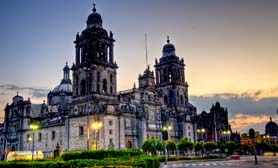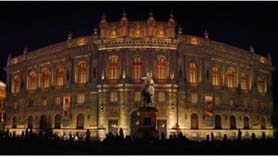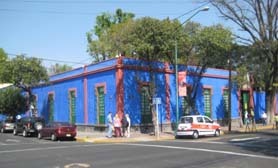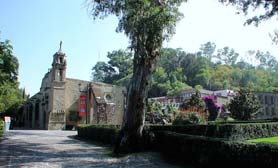Mexico DF Art, Culture & Museums
Mexico City is one of the most recognized cultural centers in the world, boasting more museums than any other city on the planet. It also comes third place in the number of theaters in the world, after London and New York. Having been the capital of a extensive pre-Hispanic empire, plus the capital of richest viceroyalty within the Spanish Empire (who ruled over a vast territory in the Americas and the Spanish East Indies), and, finally, the capital of the Mexican federation, Mexico City is a city with a profound history of artistic expression.
The early inhabitants of the settlements around Lake Texcoco produced many works of art and complex craftsmanship, some of which are today displayed at the world renowned National Museum of Anthropology and also at the Templo Mayor museum. Many pieces of pottery and stone-engraving have survived; however the great majority of the Amerindian iconography was sadly destroyed during the Spanish Conquest of Mexico.
Oddly, during colonial times the first art produced was that of the codices generated to preserve or recuperate Amerindian iconography and history. Since then, artistic expressions in Mexico have been mostly religious in nature. Mexico DF´s Metropolitan Cathedral still displays works by Juan de Rojas, Juan Correa and at least one oil painting whose authorship has been attributed to Murillo. More famous works of art of this period include the equestrian sculpture of Charles IV of Spain, locally known as El Caballito, in Spanish “The small horse”. This bronze piece, was the work of the acclaimed artist Manuel Tolsá and it has been situated at the Plaza Tolsá, in front of the Palacio de Minería (Palace of Mining). Right in front of this building is the beautiful Museo Nacional de Arte known as Munal for short, or in English the National Museum of Art.
The 19th century, brought many famous pieces of art from what was the Academia de San Carlos (San Carlos Art Academy) which had been founded during colonial times, and which later became the Escuela Nacional de Artes Plásticas (the National School of Visual Arts), which is currently one of the art schools of UNAM. Numerous works produced by the students and faculty of that time are today displayed in the Museo Nacional de San Carlos (National Museum of San Carlos). José María Velasco, one of the students, is considered one of the greatest Mexican landscape painters of the 19th century. During Porfirio Díaz’s regime that the government heavily sponsored the arts, especially those that followed the French styles and school. Despite this, popular arts in the form of cartoons and illustrations became very popular, like those of José Guadalupe Posada and Manuel Manilla. The permanent collection of the San Carlos Museum also includes paintings by European artists such as Velázquez, Murillo, Rubens and the unmistakable work of Rembrandt.
After the Mexican Revolution, an avant-garde artistic movement originated in Mexico City called “muralism” which is literally translated as wall painting. Many of the painting by the muralists José Clemente Orozco, David Alfaro Siqueiros and Diego Rivera are displayed in various buildings in the city, especially at the National Palace and the Palacio de Bellas Artes.
The painter Frida Kahlo who was the wife of Rivera, had strong nationalist expression in her art and was also one of the most renowned of Mexican painters of her time. Her private house has been turned into museum that displays many of her works.
The former home of Rivera muse called Dolores Olmedo House is the namesake this museum.
The museum is located in the Xochimilco precinct in the southern part of the city and consists of several buildings surrounded by elegant manicured lawns. It houses a large collection of Rivera and Kahlo paintings and drawings, as well as living Xoloizcuintles (Mexican Hairless Dog). It also regularly hosts small but important temporary exhibits of classical and modern art (e.g. Venetian Masters and Contemporary New York artists).
Many national artists of the 20th century immigrated to Mexico City from different regions of Mexico, like Leopoldo Méndez, the famed engraver from Veracruz, who supported the creation of the Taller de la Gráfica Popular (Popular Graphics Workshop), designed to help blue-collar workers find a venue to express their artistic tendencies. My other painters came from abroad, like the Catalan painter Remedios Varo and other Spanish and Jewish exiles. As in most post socialist nations, it was in the second half of the 20th century that the artistic movement began to drift away from the Revolutionary theme within their art.




